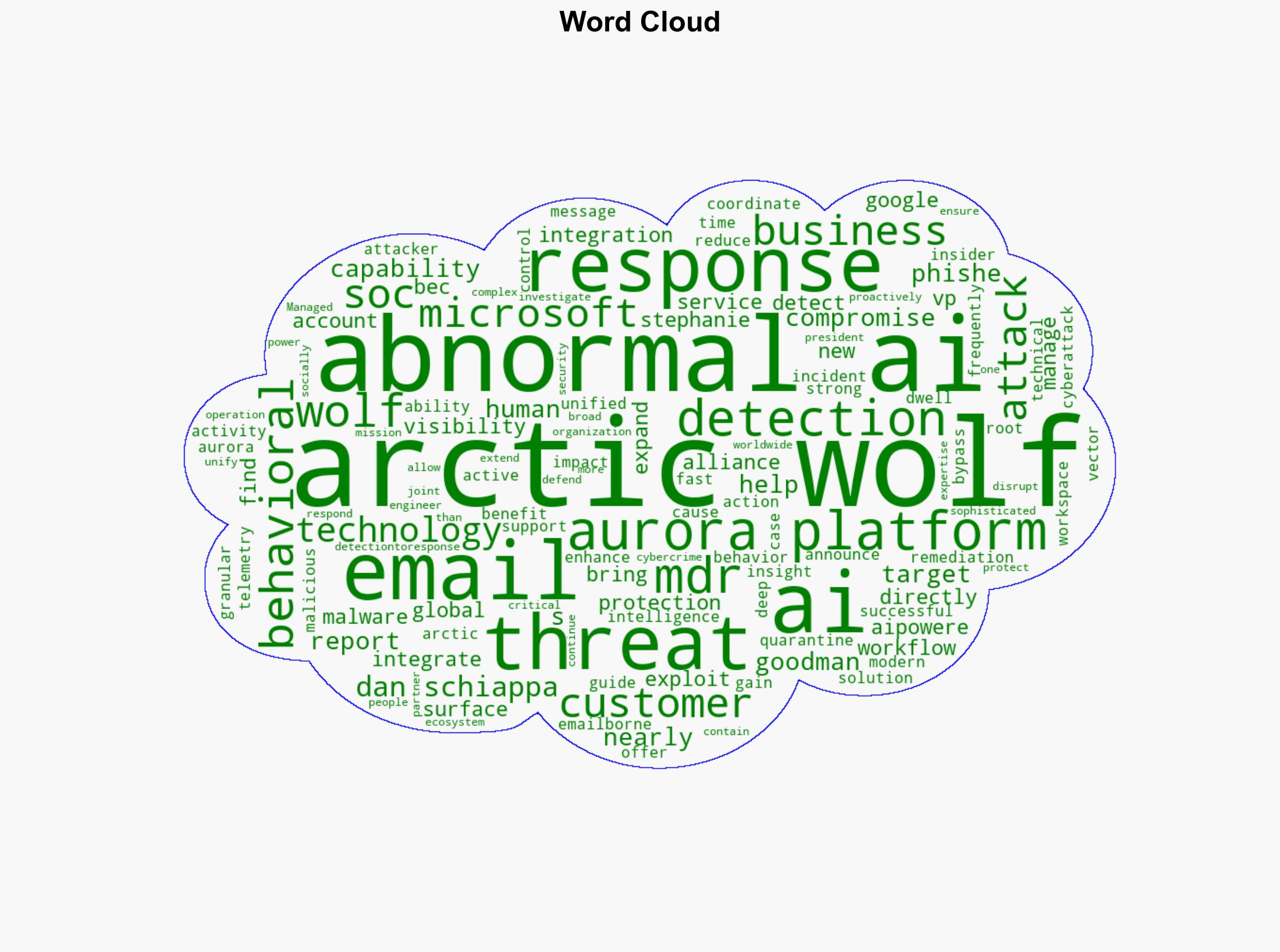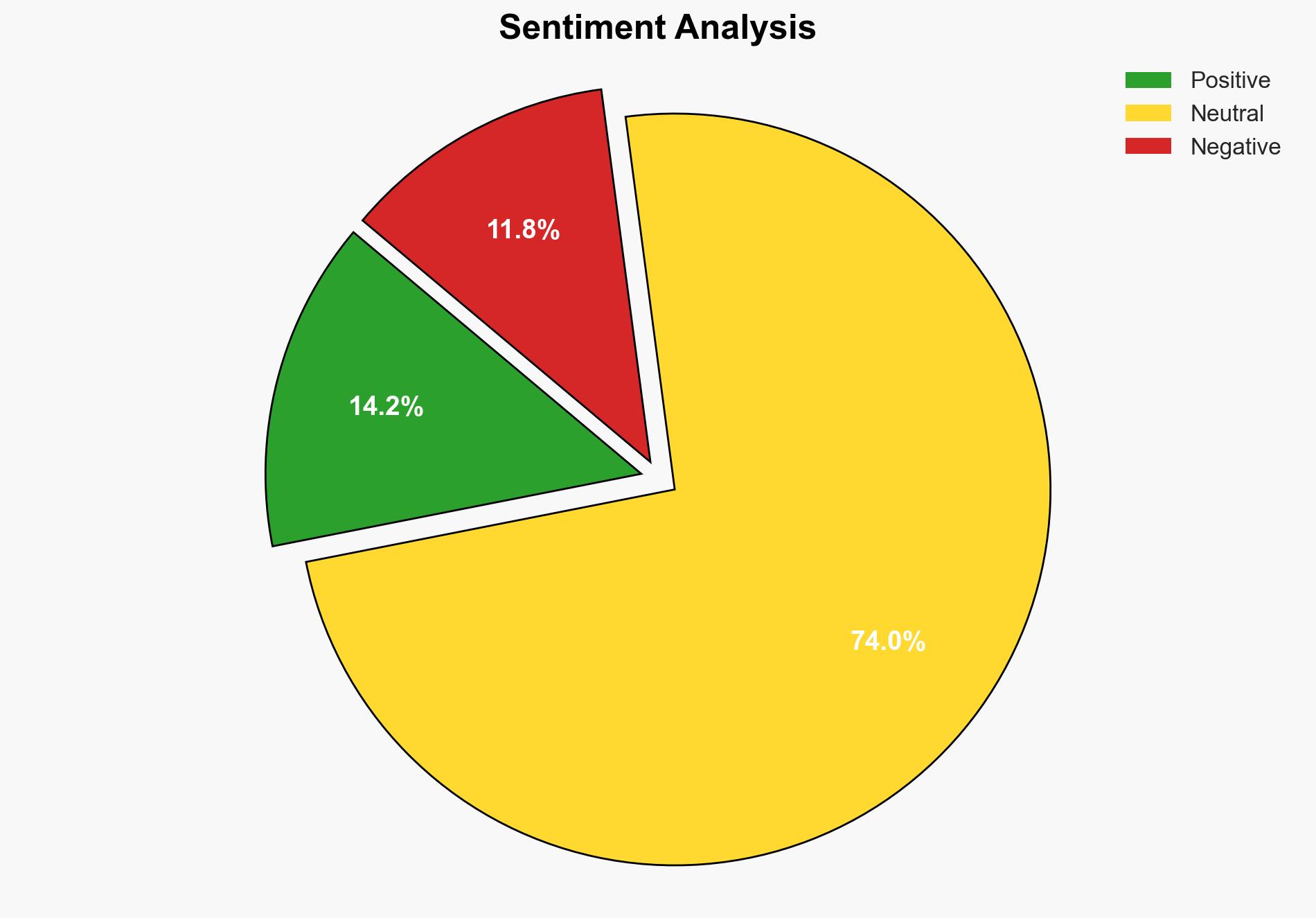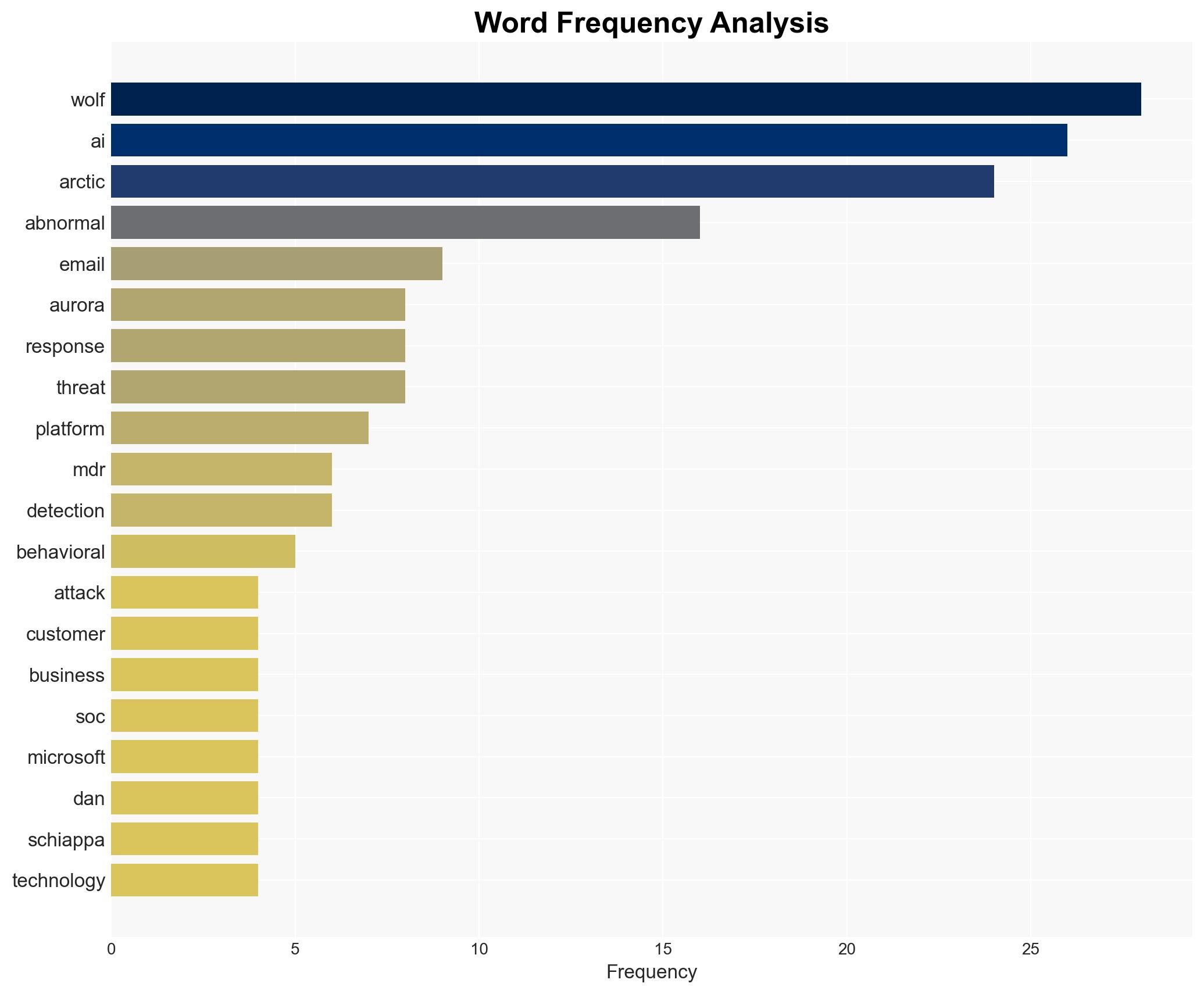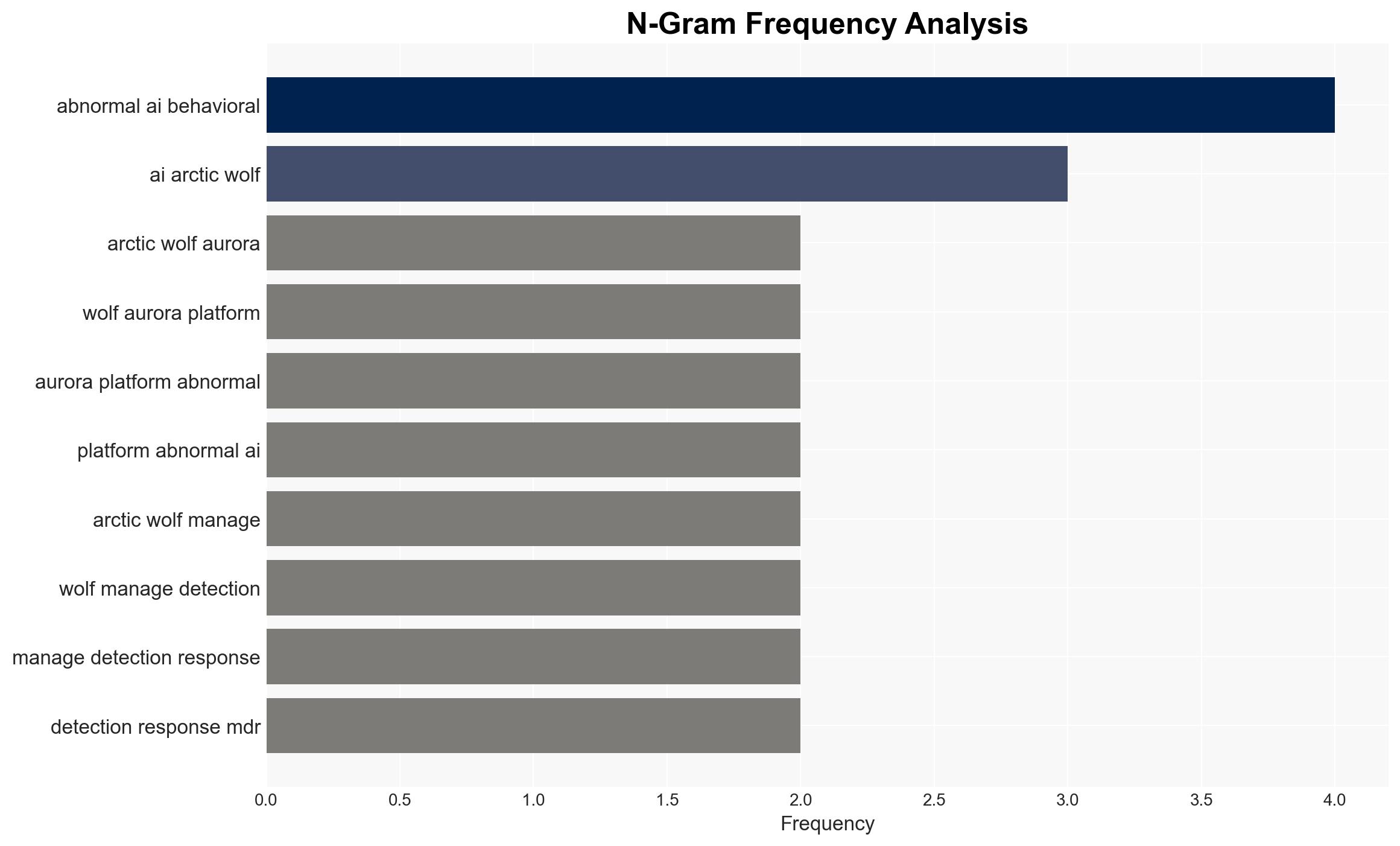Arctic Wolf expands MDR capabilities with Abnormal AI behavioral email intelligence – Help Net Security
Published on: 2025-11-19
AI-powered OSINT brief from verified open sources. Automated NLP signal extraction with human verification. See our Methodology and Why WorldWideWatchers.
Intelligence Report: Arctic Wolf’s Expansion of MDR Capabilities with Abnormal AI
1. BLUF (Bottom Line Up Front)
With a high confidence level, the integration of Abnormal AI into Arctic Wolf’s Managed Detection and Response (MDR) capabilities is a strategic move to enhance email threat detection and response, potentially setting a new standard in cybersecurity operations. The most supported hypothesis is that this integration will significantly improve Arctic Wolf’s ability to mitigate email-based threats, thereby strengthening their market position. Recommended actions include monitoring the integration’s effectiveness and exploring further AI partnerships to maintain competitive advantage.
2. Competing Hypotheses
Hypothesis 1: The integration of Abnormal AI into Arctic Wolf’s platform will significantly enhance their MDR capabilities, leading to improved detection and response to email-based threats.
Hypothesis 2: The integration may not substantially impact Arctic Wolf’s capabilities due to potential technical challenges or insufficient differentiation from existing solutions.
Hypothesis 1 is more likely due to the strategic alignment of AI-driven behavioral analysis with current cybersecurity trends and the reported success of similar integrations in other contexts.
3. Key Assumptions and Red Flags
Assumptions include the effectiveness of AI in detecting sophisticated email threats and the seamless integration of Abnormal AI into Arctic Wolf’s existing infrastructure. Red flags include potential over-reliance on AI, which may overlook non-behavioral threats, and the risk of integration challenges that could delay or diminish expected benefits. There is a potential bias in assuming AI superiority without empirical validation in this specific application.
4. Implications and Strategic Risks
The integration could lead to a competitive edge for Arctic Wolf, potentially increasing market share and influencing industry standards. However, failure to deliver promised enhancements could result in reputational damage and loss of client trust. Cyber risks include adversaries adapting to AI-driven defenses, potentially leading to more sophisticated attack vectors. Economically, successful integration could drive growth, while failure could lead to financial setbacks.
5. Recommendations and Outlook
- Conduct regular assessments of the integration’s effectiveness and adjust strategies as needed.
- Explore additional AI partnerships to diversify and strengthen capabilities.
- Best-case scenario: Successful integration leads to industry leadership in email threat detection.
- Worst-case scenario: Integration challenges result in minimal improvement and client dissatisfaction.
- Most-likely scenario: Incremental improvements in threat detection and response, with gradual market impact.
6. Key Individuals and Entities
Dan Schiappa, President of Technology and Services at Arctic Wolf; Stephanie Goodman, VP of Global Alliances at Abnormal AI.
7. Thematic Tags
Cybersecurity, Artificial Intelligence, Email Threat Detection, Managed Detection and Response (MDR)
Structured Analytic Techniques Applied
- Adversarial Threat Simulation: Model and simulate actions of cyber adversaries to anticipate vulnerabilities and improve resilience.
- Indicators Development: Detect and monitor behavioral or technical anomalies across systems for early threat detection.
- Bayesian Scenario Modeling: Quantify uncertainty and predict cyberattack pathways using probabilistic inference.
Explore more:
Cybersecurity Briefs ·
Daily Summary ·
Support us





